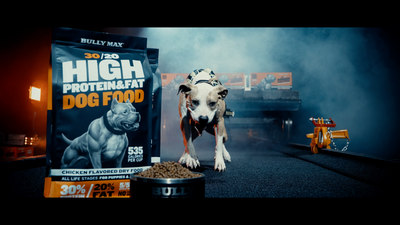The Sport of Dog Weight Pulling: How to Train Your Dog to Weight Pull
How does it work?
It’s pretty simple, really. You attach a special harness to your dog. The other end of the harness is tethered to a wheeled cart with concrete or bricks on top. The goal is for your dog to drag the load down a 16-foot-long track. The dog who drags the load the fastest is the winner.
Think of it like tractor pulling…only your dog is the tractor.
How to get started in the sport of weight pull
Improves Your Dog’s Behavior
One of the main benefits of dog weight pulling is one you probably wouldn’t expect: improved behavior.
According to the American Pulling Dogs Association (APDA), weight pulling helps improve many behavioral issues in dogs.
Their website cites a paper written by Geraldine Dawson, Chief Science Officer at Autism Speaks, which states that “increased aerobic exercise can significantly decrease the frequency of negative, self-stimulating behaviors that are common among individuals with autism, while not decreasing other positive behaviors.”
The issue, according to the APDA, is that many owners aren’t able to give their dogs the exercise they need. And that makes sense when you think about it. A dog who doesn’t get enough exercise (which could mean being walked for several hours a day) is liable to have excess energy that manifests itself as bad behavior, such as:
- Chewing on furniture, shoes, or other hosehold objects
- Aggression
- Obsessive compulsive behavior (spinning, tail chasing, fence running, self-mutilation, hallucinating (fly biting), circling, hair/air biting.)
- Shyness
- Pacing
- Excessive barking
The benefit of weight pulling, specifically, is that it allows you to give your dog the exercise it needs in a way that requires much less time from you—without a huge investment of money or equipment.
Strengthens the Owner-Dog Bond
Worried that your dog might resent you for making it pull all that heavy weight?
Don’t be.
In fact, many owners who have experimented with dog weight pulling report that it does an amazing job of strengthening the owner-dog bond.
This is because the owner acts as the dog’s coach during weight-pulling sessions. While the dog pulls the weight, it’s customary for the owner to encourage and congratulate the dog until it reaches the finish line.
It turns the two of you into a team, which helps to foster a greater sense of camaraderie and trust.
Builds Lean Muscle
Finally, weight pulling is one of the best exercises for dogs out there when it comes to building lean, healthy muscle.
Other exercises—like running, jogging, and swimming—are primarily cardiovascular in nature. They give your dog a great workout, but they don’t stimulate muscle growth the way weight pulling does.
The reason is because weight-pulling is one of the few dog exercises that allow you to incorporate progressive overload (adding more resistance over time). Once your dog is able to pull a given amount of weight, you can increase the weight a little bit next time—triggering new muscle growth and building a bigger, stronger dog.
Some dogs have been known to pull weights in excess of 11,000 pounds (like White Dragon and Sancho from the world famous Dela Cruz Bloodline:
5 tips for getting started in the sport of weight pull
If you want to take part in weight pulling, either competitively or just at home, make sure to follow these simple and important guidelines:
- Start with a light load to improve your dog’s conditioning over time
- Give your dog a 5 – 10 minute break between each pull
- Keep your dog hydrated, but in moderation. Too much water between sets can upset their stomach.
- Use a harness that is tailored for your dog’s specific size. Harnesses that are too small or too large can lead to an injury.
- Always end your training sessions on a positive note
Finally, for best results, supplement with Bully Max or Gorilla Max. The ingredients in these formulas will give your dog all the fuel they need to repair and rebuild their muscles after each workout.
Bonus Tip:
One Last Recommendation
If you’re interested in weight pulling for your dog, we recommend paying a visit to your veterinarian to make sure your dog is healthy enough to compete. By establishing a vet, you’ll also be able to immediately get your dog in for treatment if they sustain any injuries.









8 comments
I started using online dog training from WWW.K9TRAINER.INFO and it’s like my dog has had a light bulb switched on. She is a changed dog in just two weeks!!! She no longer constantly asks for attention, if I walk into the lounge and she is sitting on the sofa (not allowed) she looks at me and just gets down. Previously I shouted and pulled at her and because she is so big and beefy (weighs 5 stone), it was a major effort. Now she is looking at me for other guidance and is definitely listening more to commands. I cannot thank Doggy Dan enough. That website has been amazing and a huge help to us. I wish I hadn’t spent money on other useless trainers in the past that told me theres no such thing as a “pack leader” and that those who trained that way were cruel. What a load of tosh. If you want to train your dog right, this is how it’s done!
Hi!
I have a Rottweiler who is exhibiting the “bad behavior” symptoms because of my lack of understanding of his energy level and constant need of physical activity to keep his mind and body stimulated.
Where can I find a harness for him? I’d like to introduce him to this sport and hopefully enjoy a new healthy lifestyle alongside him.
G’morning Bob,
Did you ever find your harness?